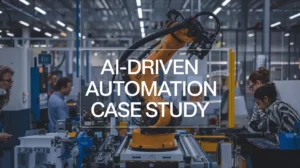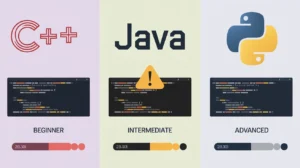Introduction
Toppr is one of the leading ed-tech startups in India, providing personalized learning solutions to K-12 students. The Mumbai-based company has raised over $112 million in funding and has been featured in top-tier publications such as Forbes, TechCrunch, and The Economic Times. However, on June 29th, 2022, Toppr announced layoffs of 350 employees, citing a restructuring plan aimed at optimizing its operations. This blog aims to provide an in-depth analysis of the layoffs, exploring the company’s history, performance, and the factors that led to the decision.
Company History:
Toppr was founded in 2013 by Zishaan Hayath and Hemanth Goteti, two IIT Bombay graduates who identified a gap in the K-12 education market. The founders’ vision was to use technology to provide affordable and personalized learning solutions, leveraging data analytics and AI/ML algorithms to tailor the curriculum to each student’s learning needs. Toppr started as an online test-prep platform for engineering entrance exams, but later expanded to cover other competitive exams and K-12 syllabus.
Funding and Investors:
Toppr has raised over $112 million in funding from prominent investors such as SAIF Partners, Eight Roads Ventures, Helion Venture Partners, and Kaizen Private Equity. The latest round of funding was led by Kaizen Private Equity, which infused $46 million in Toppr in May 2021. The company is backed by some of the biggest names in the Indian startup ecosystem, including Flipkart co-founder Binny Bansal, Ola co-founder Bhavish Aggarwal, and Paytm founder Vijay Shekhar Sharma.
Performance
Toppr has been steadily growing its user base, offering a competitive pricing model and a wide range of courses. According to a report by YourStory, Toppr has over 1.1 crore registered users and a retention rate of 75%. The company claimed to have recorded a 2.5x year-on-year growth in revenue for the FY 2020-21, despite the pandemic-induced disruptions. However, the company’s profitability status is not disclosed, and the layoffs could indicate a financial strain..
Reason for Layoffs
On June 29th, 2022, Toppr announced that it would be laying off 350 employees as part of a restructuring plan to optimize its operations. The company stated that the decision was taken after a thorough review of its business model and cost structure, with the aim of achieving sustainable growth and profitability. Toppr stated that the layoff was a difficult decision but necessary to focus on its core business areas and reduce operational inefficiencies..
Number of Employees Laid Off:
The layoffs impacted around 7% of Toppr’s workforce, with the majority of the affected employees being from the support and content teams. Toppr stated that the laid-off employees would receive a ‘generous severance package’ and extended support in finding new opportunities. The company also stated that it would continue to invest in hiring for key positions and focus on upskilling and reskilling its existing employees.
Statement from Company Stakeholders:
Toppr’s co-founder and CEO Zishaan Hayath stated that the decision to lay off employees was not easy but was necessary to ensure that the company was on a sustainable growth path. He stated that Toppr was committed to supporting all the affected employees and would take steps to ensure a smooth transition. The company’s investors also expressed confidence in the decision, stating that it was in line with the company’s long-term vision and would lead to improved efficiency.
Conclusion
In conclusion, Toppr’s layoffs have sparked concerns among the Indian startup ecosystem, raising questions about the ed-tech sector’s sustainability. However, the company’s decision to restructure and optimize its operations could be seen as a prudent move, aimed at achieving long-term growth and profitability. As the ed-tech space gets crowded, companies like Toppr need to constantly innovate and adapt to stay ahead of the curve. The challenge will be to do so while balancing the growth aspirations and financial prudence.






















